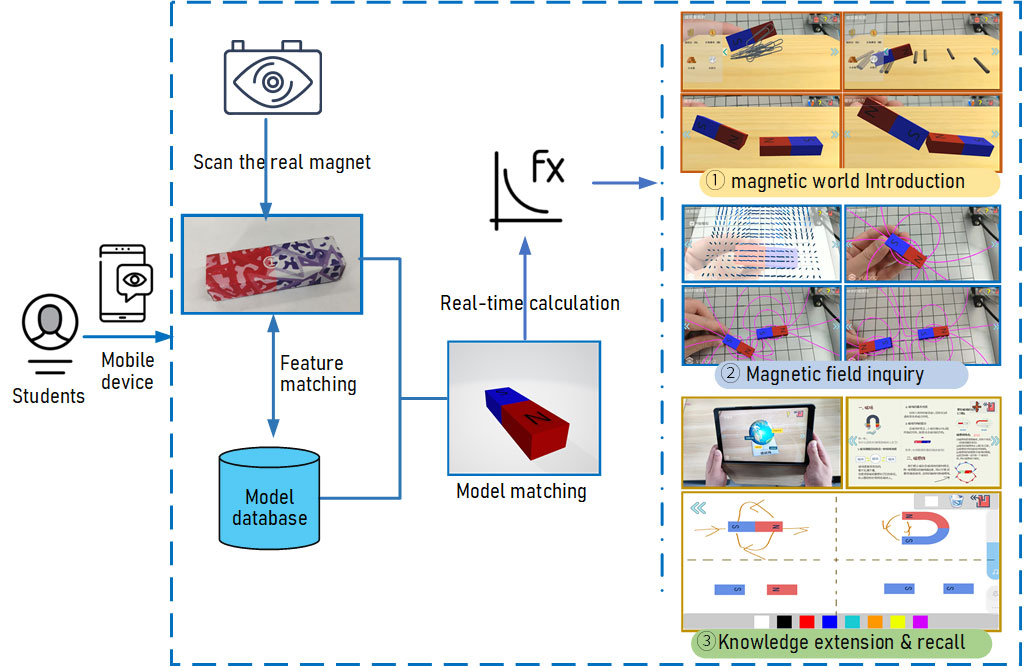2️⃣ Magnetism learning 
In this research, we proposed an AR-based magnetism experiment to support junior high school students physics learning. Students can not only feel the repulsion and attraction between two magnetic poles, but can also observe the changes in the magnetic field lines in real time..
We conducted two experiments:
In study 1. We compared the effects of AR, 3D, and traditional magnetism experiments. The results showed that students in AR group outperformed those in other groups and presented the least cognitive load.
In study 2. We focused on students’ physics learning anxiety and conducted a 2(AR & non-AR)*2(low & high physics anxiety) experiment to investigate their effects on students’ learning. Results showed that AR can significantly motivate students with high anxiety, all students hold a positive attitude towards MagAR.
Publications:
-
The effects of an augmented reality based magnetic experimental tool on students’ knowledge improvement and cognitive load
Qingtang Liu, Shufan Yu*, Wenli Chen, Qiyun Wang, Suxiao Xu.
Journal of Computer Assisted Learning, 37(3), 645–656. (2021)

-
Applying Augmented reality to enhance physics laboratory experience: does learning anxiety matter?
Shufan Yu, Qingtang Liu, Jingjing Ma, Huixiao Le, Shen Ba (2022)
Interactive Learning Environments, 1–16.

